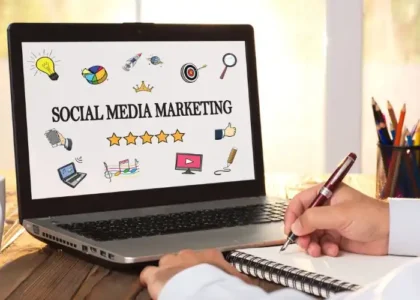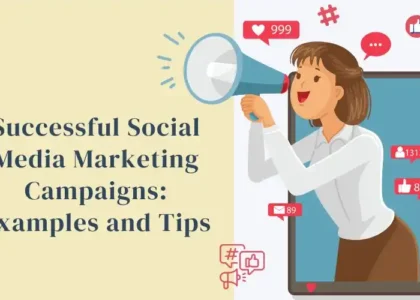While there are plenty of social media platforms to choose from nowadays, Instagram remains one of the most popular for businesses to be on. In fact, a business with a budget for paid social advertising should strongly consider running ads on Instagram. Data estimates that the platform will have around 1.35 billion users in 2023, so there’s no doubt that Instagram remains a giant social media behemoth.Moreover, that number does not appear to be decreasing anytime soon. Additionally, most users also tend to be younger and spend around 5 hours per week on it, making it a ripe platform for advertisers to target potential customers.Even if you are not a multimillion-dollar business, it still helps to be on the platform (maybe even more so).
If you’re working with an advertising agency or an international advertising agency, this might be one of the platforms recommended for you to use. But why this one in particular? What makes it so special? Well, here are a few reasons listed below:
- Almost anyone can advertise or create ads for the platform, meaning there is a very low barrier to entry.
- Audience engagement is practically limitless – audiences can engage with the ad in a variety of ways, and businesses can comment back directly.
- As Instagram is part of Meta (previously known as Facebook), this means it has access to all of Facebook’s data. You can use this data to target the right audience for your brand.
- Ads usually take a ‘native’ format, meaning it fits seamlessly with the platform and other posts. This makes the ad feel less conspicuous, meaning audiences are more likely to engage with it and take in the brand message.
- There are multiple ways and formats to advertise on Instagram, either through posts, stories, videos and more. This not only showcases your message in different ways, making it feel less stale, but it can also attract different kinds of audiences (some may gravitate more towards video content instead of images).
Instagram’s Ad formats
As mentioned above, Instagram employs a variety of ad formats for brands and agencies to utilise. This makes it easy to reach as wide of an audience as possible, as well as making the ads engaging and memorable. Here are a few of the options listed below:
-
Photo Ads
The most ubiquitous and simplest advertising format on Instagram, photos ads are pretty much how it sounds. An Instagram photo ad can look very similar to a normal post, the only difference will be a ‘sponsored’ label in the corner to let people know it is a paid post. This means that formats match that of normal Instagram posts. Aside from that, the photo ads also include a call to action button to push potential customers to a specific URL or Instagram account. Instagram personally recommends using this ad format if a brand wants to showcase or highlight a particular product or message. Unlike the other ad formats, photo ads can also be used to promote a brand’s previous Instagram post, which makes it a pretty handy tool to ensure a popular post remains at the top of everyone’s feed. Instagram’s photo ads also tend to be the cheapest option compared to the rest.
-
Carousel Ads
These ads are similar to the above photo ads but are just taken to the next level.This is where you swipe a series of photos to use, much like that of a carousel. More specifically, Instagram’s format will allow advertisers and brands to create a series of up to 10 photos or videos in a single ad. Aside from Instagram’s news feed showing these ads, each photo or video can be linked to a different URL or location. Carousel ads are often used to showcase various products or various views and angles of a particular product.
If you are not sure about when to use photo ads or carousel ads, keep in mind what you are planning to promote. Most carousel ads work best when there is a clear theme or correlation between the different photos or videos showcased. They are also a great option if you are looking to announce a new product line or seasonal collection.
-
Video Ads
Much as its name suggests, the ad’s main format is that of a video. More specifically, brands and advertisers can post a video of 60 seconds or less. With short-form videos becoming ever-more popular, especially with the younger generation, this format is a fantastic way of gaining attention as it allows brands more creativity when it comes to presenting their products.It also gives brands more time to pitch their products and services to potential customers. On the other hand, it might take slightly more effort to produce them. It is generally recommended that you try to catch your audience’s attention quickly and early on in the video before they get bored with it. This way, you can pack a large punch in a short amount of time.
-
Shopping Ads
On a slightly different note, Instagram’s shopping ads are more geared toward e-commerce. This ad will automatically allow companies to promote and sell their products or services on Instagram’s platform itself. Although it looks like an image ad at first glance, shopping ads can let advertisers include a product tag in the image, which will link directly to the product page of their e-commerce website. This creates a seamless experience for customers by removing any barriers when they are planning to make a purchase.
However, in order to use shopping ads, a brand must first set up an Instagram shop. Despite the extra effort, this ad is great for highlighting a product catalogue.
-
Stories Ads
These Instagram ads are not found on your news feed, but instead, show up in users’ stories. With over 500 million people using Instagram stories every day, this is a great method of getting a business’s product and service out to the world. Much like other Instagram ad formats, story ads are often placed natively, so it seems almost indistinguishable from other organic stories. This allows it to better target the right audience, while also ensuring the audience is more receptive to the ad’s message. Experts recommend that you use stories when you want to use exclusivity as a marketing strategy. It can also give audiences a sense of emergency, as stories are only up for 24 hours before disappearing. For instance, this can include limited-time offers or discounts, so customers know they have to act quickly.
Story ads can either feature a full-sized image or video, and it also includes a swipe-up call to action. This call to action can take audiences to your profile page, website, shop, or anywhere else you want them to go.





